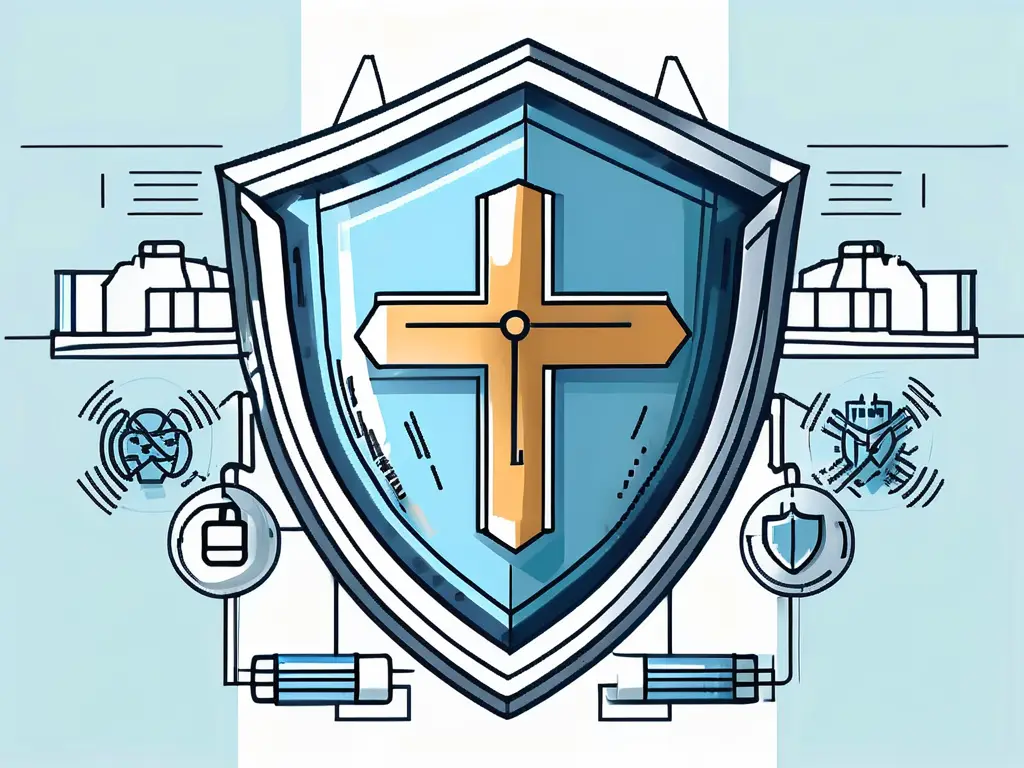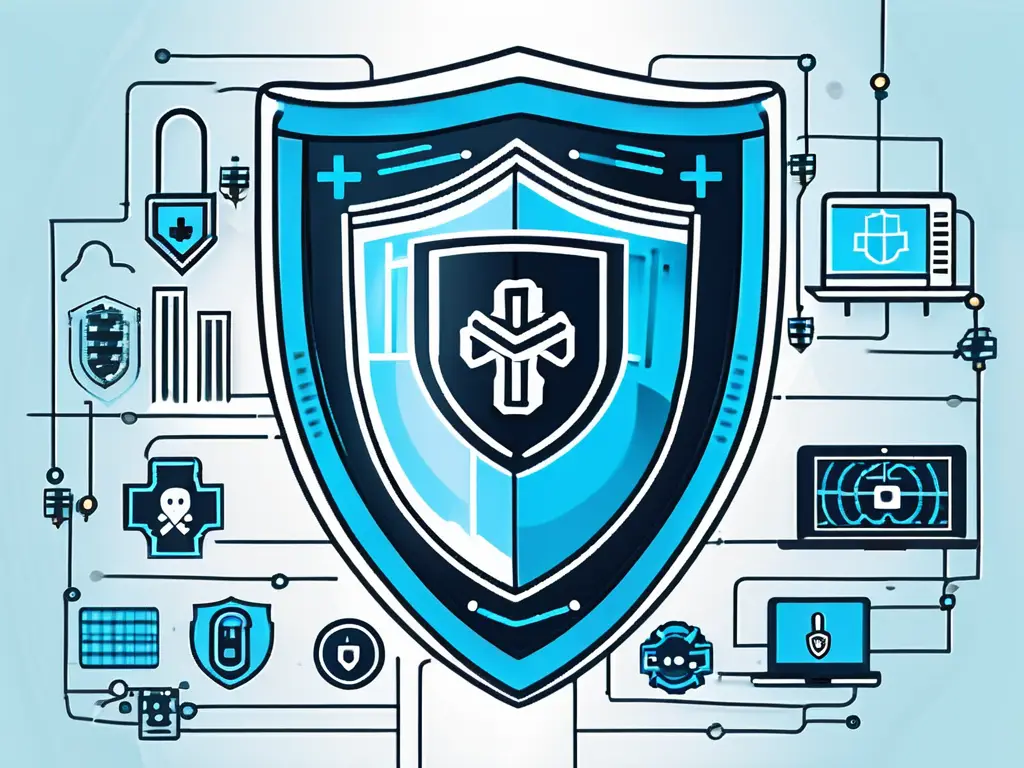Updated November 16, 2024
Medical devices play a crucial role in patient care, but as technology advances, so does the need to address potential cybersecurity risks. The FDA’s Quality System Regulation (QSR) for Medical Device Cybersecurity aims to ensure the safety and effectiveness of these devices in the face of evolving threats. In this article, we will explore the various aspects of the QSR and its implications for the medical device industry.
Understanding the FDA’s Quality System Regulation (QSR)
Before delving deeper into the specifics of the QSR, it’s crucial to grasp the pivotal role of the FDA in regulating medical devices. The FDA serves as the gatekeeper, ensuring the safety, efficacy, and quality of medical devices available. This regulatory body plays a critical role in protecting public health by setting stringent standards for manufacturers to adhere to. The QSR acts as a guiding framework, outlining the requirements that manufacturers must follow to comply with FDA regulations and ensure the safety of medical devices.

The Role of the FDA in Medical Device Regulation
The FDA’s oversight in regulating medical devices is paramount in safeguarding public health. By meticulously evaluating and monitoring medical devices, the FDA aims to guarantee that these products are safe for use and deliver the intended benefits without compromising patient safety. Through its regulatory authority, the FDA establishes and enforces standards for quality and performance, holding manufacturers accountable for meeting these rigorous criteria.
Components of the QSR
Within the realm of the QSR lie several critical components that dictate medical devices’ manufacturing and quality control processes. These components encompass a spectrum of requirements, including design controls, production and process controls, and corrective and preventive actions. Each of these elements plays a vital role in ensuring that medical devices are meticulously designed, manufactured, and maintained to mitigate cybersecurity risks, safeguarding both patients and healthcare systems.
Manufacturers must understand the intricate interplay between these components to uphold the integrity and safety of medical devices throughout their lifecycle. By adhering to the stringent guidelines outlined in the QSR, manufacturers can navigate the complex regulatory landscape set forth by the FDA, ultimately contributing to delivering high-quality and safe medical devices to patients worldwide.
The Importance of Cybersecurity in Medical Devices
Cybersecurity has become a critical concern with the increasing integration of technology into medical devices. Medical devices, such as pacemakers and insulin pumps, are vulnerable to cyber-attacks that can pose severe risks to patients’ health and safety. The FDA recognizes the importance of addressing these risks and has taken steps to prioritize cybersecurity in the medical device industry.
As technology advances, medical devices’ complexity increases, providing more entry points for potential cyber threats. Ensuring the security of these devices is essential to maintaining patient trust and safeguarding their well-being. Manufacturers must stay vigilant and proactive in implementing robust cybersecurity measures to stay ahead of malicious actors.
Risks Associated with Cybersecurity in Medical Devices
The risks associated with cybersecurity in medical devices are manifold. Hackers can gain unauthorized access to device controls, altering functionality or compromising patient data. This puts patients at risk of experiencing medical errors or having their personal information exposed. The consequences of such breaches can be severe, underscoring the need for robust cybersecurity measures.
The interconnected nature of healthcare systems can amplify the impact of a cybersecurity breach. A single compromised device could potentially affect an entire network, leading to widespread disruptions in patient care and hospital operations. This interconnectedness highlights the importance of securing individual devices and ensuring the overall resilience of the healthcare infrastructure.
The Impact of Cybersecurity on Patient Safety
Cybersecurity breaches in medical devices can directly impact patient safety. For example, unauthorized access to a ventilator could lead to life-threatening alterations in breathing parameters. Similarly, tampering with drug infusion pumps could result in incorrect dosages, jeopardizing patient well-being. Protecting patient safety requires a comprehensive approach to cybersecurity and adherence to the QSR.
The evolving regulatory landscape underscores the critical role of cybersecurity in ensuring patient safety. Regulatory bodies are increasingly focusing on cybersecurity requirements for medical devices, emphasizing the need for manufacturers to integrate security features into their products from the design phase. Compliance with these regulations is a legal obligation and a moral imperative to prioritize patient welfare above all else.
How the QSR Addresses Medical Device Cybersecurity
The QSR provides a comprehensive framework for addressing cybersecurity concerns in medical devices. It serves as a crucial guideline for manufacturers, outlining specific requirements that must be met to ensure the resilience and security of these devices throughout their entire lifecycle. By adhering to the QSR, manufacturers can enhance the safety and effectiveness of their medical devices in the face of evolving cybersecurity threats.

The QSR emphasizes the importance of proactive cybersecurity measures in designing and developing medical devices. Manufacturers must incorporate robust cybersecurity controls from the initial stages of product creation to mitigate potential vulnerabilities. This proactive approach helps safeguard patient data and device functionality and builds trust among healthcare providers and patients.
QSR Requirements for Medical Device Cybersecurity
Within the QSR, there are specific requirements that manufacturers must diligently follow to address cybersecurity risks effectively. These requirements include conducting thorough risk assessments, implementing stringent cybersecurity controls, and establishing protocols for promptly detecting and responding to cybersecurity incidents. By integrating these requirements into their processes, manufacturers can bolster the overall cybersecurity posture of their medical devices and minimize the likelihood of successful cyber-attacks.
The QSR underscores the significance of continuous improvement and adaptation in medical device cybersecurity. Manufacturers are encouraged to continually stay abreast of emerging threats, technological advancements, and regulatory updates to enhance their cybersecurity practices. This ongoing commitment to cybersecurity excellence benefits manufacturers in maintaining regulatory compliance and contributes to the overall resilience of the healthcare ecosystem against cyber threats.
The Role of Manufacturers in Ensuring Cybersecurity
Manufacturers play a pivotal role in upholding the cybersecurity of medical devices and safeguarding the integrity of healthcare systems. They must implement robust security measures, conduct regular cybersecurity audits, and promptly address identified vulnerabilities or weaknesses. Collaboration with healthcare providers, cybersecurity experts, and regulatory bodies is also essential for manufacturers to gain insights into evolving threats and best practices, fostering a proactive and collaborative approach to cybersecurity in the medical device industry.
Challenges in Implementing the QSR for Medical Device Cybersecurity
While the QSR provides a comprehensive framework for addressing cybersecurity in medical devices, implementing its requirements can present several challenges for manufacturers.
One of the key challenges manufacturers face is the ever-evolving landscape of technological advancements in cybersecurity. Each innovation brings a new set of potential vulnerabilities that hackers can exploit. This constant game of cat and mouse requires manufacturers to stay vigilant and continuously update their cybersecurity measures to avoid cyber threats.
The interconnected nature of modern medical devices adds another layer of complexity to cybersecurity implementation. With devices communicating with each other and external systems, the attack surface for potential cyber threats expands, requiring manufacturers to secure individual devices and their entire network.
Technological Challenges in Cybersecurity
As technology evolves, so do the challenges associated with cybersecurity. Maintaining rapidly changing threats and ensuring compatibility with developing software and hardware can be daunting for manufacturers. Moreover, the complexity of medical devices and their interconnectivity further complicates the implementation of effective cybersecurity measures.
Additionally, the regulatory and compliance landscape poses significant challenges for manufacturers striving to meet the QSR requirements. The stringent regulatory framework demands meticulous documentation of cybersecurity measures, extensive testing to ensure device security, and continuous monitoring to detect and respond to potential breaches. This regulatory burden increases the time and resources required for compliance and adds a layer of complexity to the already intricate process of developing and maintaining medical devices.
Regulatory and Compliance Challenges
Complying with the QSR can be a complex and time-consuming process for manufacturers. Strict adherence to regulatory requirements involves meticulous documentation, rigorous testing, and ongoing monitoring. Navigating the regulatory landscape and ensuring compliance with multiple standards can add significant overhead to developing and maintaining medical devices.
Future Directions for the QSR and Medical Device Cybersecurity
As technology advances and cybersecurity threats evolve, the FDA and the medical device industry must stay vigilant and adapt to emerging trends.

Emerging Trends in Medical Device Cybersecurity
Emerging trends in medical device cybersecurity include adopting artificial intelligence and machine learning to enhance threat detection and response capabilities. These technologies can potentially revolutionize how medical devices protect patient data and prevent cyberattacks.
Artificial intelligence can analyze vast amounts of data in real-time, enabling medical devices to detect anomalies and potential threats more efficiently. Machine learning algorithms can continuously learn and adapt to new cyber threats, improving the overall resilience of medical devices against attacks.
Integrating blockchain technology can improve data security and traceability, enhancing patient trust and confidence in medical devices. Blockchain, a decentralized and immutable digital ledger, can provide a transparent and tamper-proof record of all interactions with medical devices. This technology can help ensure the integrity and privacy of patient data, reducing the risk of unauthorized access or manipulation.
The FDA’s Future Plans for the QSR
The FDA is committed to continuously evaluating and updating the Quality System Regulation (QSR) to address the evolving cybersecurity landscape. They recognize the importance of staying ahead of cyber threats and actively engage with industry stakeholders to identify areas for improvement.
This collaborative approach involves working closely with manufacturers, healthcare providers, and cybersecurity experts to gather insights and expertise. By leveraging these stakeholders’ collective knowledge and experience, the FDA aims to enhance the QSR’s effectiveness in safeguarding patient safety in an increasingly interconnected world.
Additionally, the FDA is exploring possibly implementing a more proactive approach to medical device cybersecurity. This could involve requiring manufacturers to regularly update the cybersecurity features of their devices throughout their lifecycle. The FDA aims to ensure that medical devices remain resilient against emerging threats by mandating ongoing cybersecurity assessments and updates.
Conclusion
The FDA’s Quality System Regulation for Medical Device Cybersecurity provides a crucial framework for manufacturers to address the inherent risks in medical devices. By adhering to the QSR requirements, manufacturers can implement robust cybersecurity measures that protect patient safety and ensure the overall effectiveness of medical devices. As the cybersecurity landscape evolves, the FDA and the medical device industry must remain proactive, embracing emerging trends and continuously improving the QSR to safeguard public health.
As the FDA’s Quality System Regulation for Medical Device Cybersecurity continues to evolve, partnering with a cybersecurity expert like Blue Goat Cyber becomes essential. With our comprehensive services, including medical device cybersecurity, penetration testing, and compliance with HIPAA and FDA standards, we are dedicated to protecting your business from cyber threats. Our veteran-owned, USA-based team offers customized, cutting-edge solutions to meet your organization’s unique needs. Don’t let cybersecurity uncertainties hold you back. Contact us today for cybersecurity help and take the first step towards safeguarding your medical devices and ensuring the trust of your patients and clients. Secure your operations and maintain compliance with Blue Goat Cyber’s unparalleled expertise.
Check out our medical device premarket cybersecurity submission services.
MedTech Cybersecurity QSR FAQs
Please schedule a 30-minute Discovery Session with us so we can best understand your objectives.
The QSR (21 CFR Part 820) is a set of regulations that outline requirements for medical device manufacturers to ensure devices are safe and effective. MedTech cybersecurity falls under these regulations as part of design controls, risk management, and post-market surveillance, addressing threats that could compromise device safety and functionality.
Cybersecurity ensures that medical devices are protected against unauthorized access, data breaches, and operational disruptions. The FDA’s QSR emphasizes incorporating cybersecurity into design controls and risk management processes to prevent vulnerabilities that could impact patient safety and device performance.
Risk management is central to QSR compliance, requiring manufacturers to identify, evaluate, and mitigate cybersecurity risks throughout the product lifecycle. This includes documenting threat models, implementing controls, and continuously monitoring for emerging vulnerabilities.
Under QSR, design controls require manufacturers to establish and verify cybersecurity features during the design phase. This includes validating secure software development practices, ensuring encryption, and implementing access controls to prevent unauthorized use or tampering.
Documentation includes:
- Risk management plans and reports.
- Cybersecurity threat models and vulnerability analyses.
- Design specifications addressing cybersecurity.
- Validation and verification reports for cybersecurity controls.
- Records of software updates and patches during post-market surveillance.
The FDA assesses whether manufacturers have adequately addressed cybersecurity risks in their design and manufacturing processes. This includes reviewing risk management documentation, design specifications, and post-market surveillance activities related to cybersecurity.
The QSR requires manufacturers to maintain systems for monitoring and addressing cybersecurity risks after a device is released. This includes issuing patches, conducting vulnerability assessments, and responding to reported incidents to ensure ongoing compliance and safety
The FDA’s cybersecurity guidance provides detailed recommendations for managing cybersecurity risks, which align with QSR requirements. These include secure design practices, risk assessments, and ongoing monitoring, helping manufacturers integrate cybersecurity into their quality systems.
Challenges include keeping pace with evolving threats, addressing vulnerabilities in legacy devices, balancing security with usability, and ensuring comprehensive documentation. Manufacturers must also align cybersecurity efforts with other regulatory frameworks, such as EU MDR or ISO 13485.


